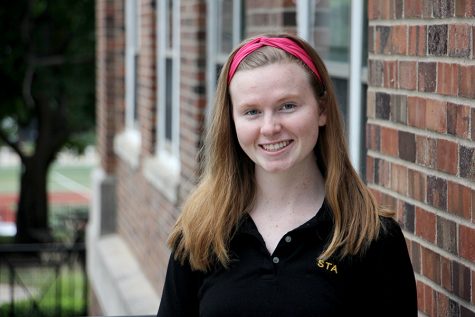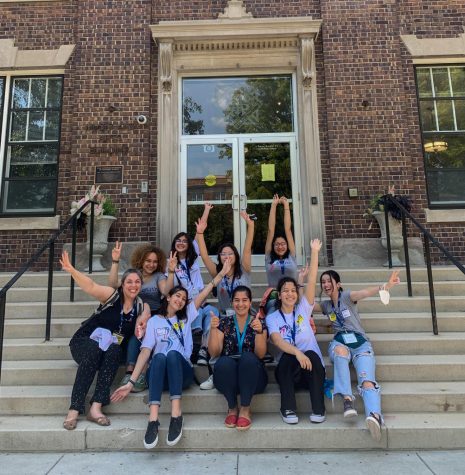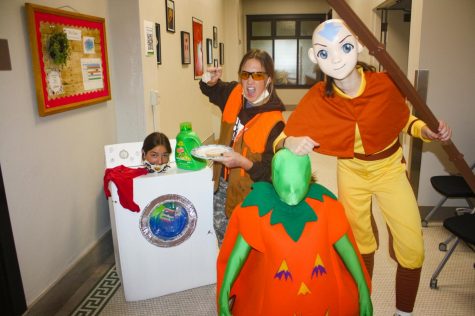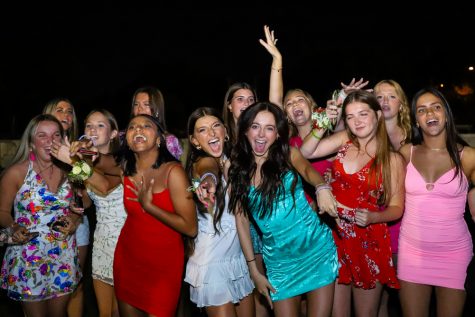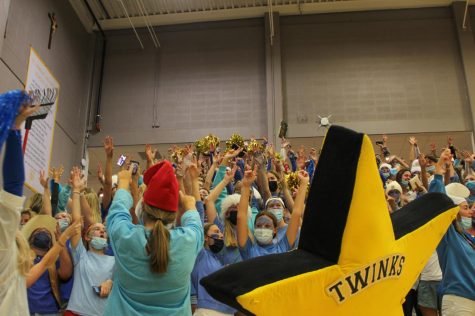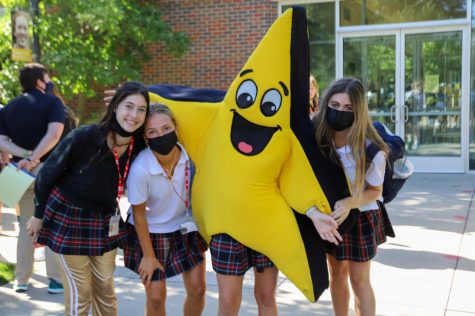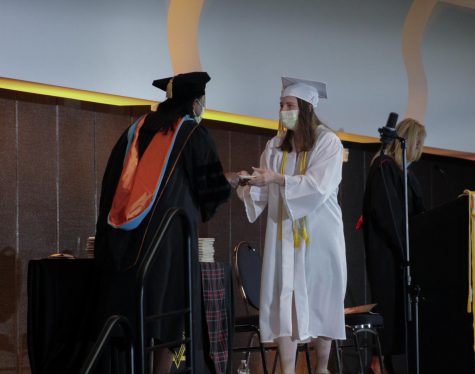Recent donation accelerates library renovation plans
STA’s Donnelly Hall library will be renovated into a math center ahead of schedule.
Marks on the carpet remain in the Donnelly library where bookshelves were removed. STA’s book collection will be split up into what can fit into the temporary library and a storage area for the rest of the books in the coming school year. photo by Linden O’Brien-Williams
May 16, 2016
STA’s plans to renovate the Donnelly Hall library into a math center were moved up and solidified about three weeks ago, when an anonymous donor funded the renovation. According to math department head Jo Weller, the renovations were already part of STA’s plans to add onto Goppert Center in coming years, but the anonymous donor donated funds to go toward a specific cause, so rather than wait to begin renovating, the plans were accelerated.
“These donors feel very passionate about STEM education,” Weller said. “They feel having a strong math program is a critical part of having a strong STEAM program, so they’ve donated their money to a specific purpose instead of general money to STA.”
During the 2016-2017 school year, the library will be relocated to math teacher Kelsey Romine’s current classroom location, to the north of the library. The next year, the library should be added onto Goppert as previously planned, with a more modern look and “glass modulars,” according to Hershewe.
Hershewe adds that with limited room, she “guesstimates” that shelving will likely hold only select popular nonfiction books along with the fiction collection. Although the plan is tentative, remaining books will likely be placed in storage, in a “closed stack” kind of situation, but available for checking out upon request.
[The donors] feel having a strong math program is a critical part of having a strong STEAM program, so they’ve donated their money to a specific purpose.
— math teacher Dr. Jo Weller
There will be fewer tables and less room to accommodate students in the library for silent study during free periods, but Hershewe does not foresee any issues.
“I think a lot of the students who come to silent study now are actually already on this floor because of the math classes, so those students should already be in the new math hub,” Hershewe said. “So it would free up new space. The library sometimes can get full … but especially for those students who have always come to the library, I don’t foresee that they would have to move.”
The “new math hub” Hershewe speaks to is part of the math center. Replacing the current library will be two math classrooms, plus individual and group study spaces.
“In addition to the two classrooms, there will still be space for 20-25 students in there for primarily students who are working on math homework,” Weller said.
According to Weller, one room will house about six to eight students looking to do group work or group studies, one room will be a relaxed environment, where students “can come in, for example, after a test and just collaborate and kind of talk about it.” There will be another quieter space for individual study or peer tutoring.
The two new classrooms will be “active learning classrooms” according to Weller, which allows a “lab element” to be brought into the math environment.
“Probably the main thing students will notice is the furniture is different,” Weller said. “You have large flat surfaces for tables. All tables and chairs are on wheels, so it’ll be easy to move between a lecture style and a group study style.”
The new math center, according to Weller, facilitates the growth of the Hub, STA’s math tutoring program that currently meets during lunch and activity periods. With new spaces available, the group will go from tutoring 70 students per week to around 140, offering a weekly “menu” of topics being covered, during lunch, activity and frees.
All geometry classes will be taught in the new classrooms next year, since the nature of the course gives itself to having flat surfaces and collaborative areas to work on, according to Weller. Math teachers Kelsey Romine, Renee Fietsam and Kim Sirridge will be moving to a shared space model, in which they rotate in their classroom usage and move to office space during their free periods.
In her 16 years of working at STA, Weller says she has never seen developments of this caliber in the math department, something she attributes to the school’s recent STEAM initiative, along with the donation itself.
Although she will be working in a smaller space next year, Hershewe says it is “just a matter of adjusting” and that she is excited for both the new library and the developments to come.




